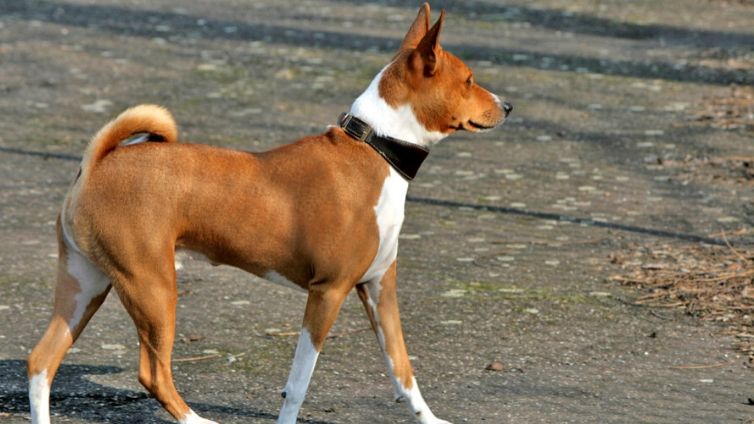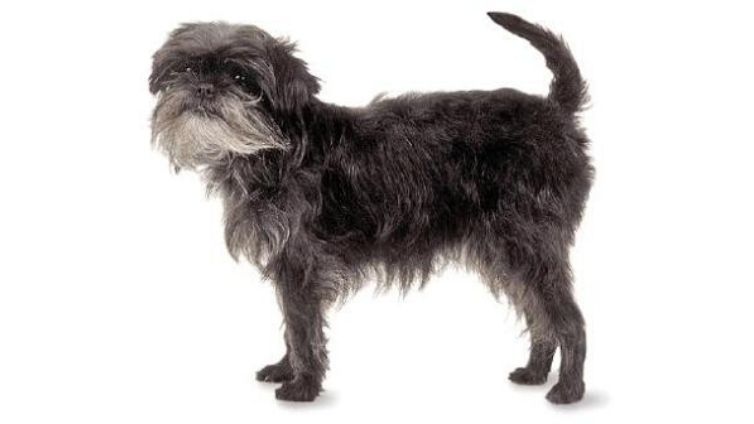Dogs are such unique beings. They are fluffy, loyal, and always there to keep your feet warm durign cold days.
There is no difference between purebred dogs and mixed breed dogs when it comes to choosing a dog to love.
Each one is unique and has certain traits that can make your life only richer. Still, from the physical side, certain traits differ one dog from another one.
As result, some dogs have pointy ears, some have curly coats, while some have really long necks that give them that elegant look.
Are you thinking about getting a dog with a long neck? Do dogs with long necks hold a special place in your heart?
If so, then this article is for you. Read on to discover some of the most popular dog breeds with long necks and elegant appearances.
Before you run off to find a reputable and responsible breeder to get one of these dogs, make sure that you check your local shelter first – adoption is a wonderful act and by adopting you can actually save a dog’s life.
5 Dogs With Really Long Necks
Just like in humans, every part of a dog’s body has a specific role in keeping the dog healthy and strong.
You may think that a dog’s neck is a powerful part of his body because the leash is always wrapping it.
However, although the neck is a very powerful part of the dog’s body, the constant pulling on the dog’s collar may create stress and even a lifetime of painful disc disease and even shoulder ailments.
The neck and cervical spine contain the spinal cord that enables the nerves of the front legs to originate – this is the main reason why you should be very careful when choosing the best collar or harness.
All in, you should be very careful when it comes to treating your dog’s neck.
No pulling no matter how gentle it may be should be a normal practice. Plus, if you notice that your dog is choking stop pulling.
If you are on a hike or a long run think about getting a harness for your dog, as a safer option.
Now, let see the dog breeds with the most elegant necks within the canine world.
Basenji

Basenji is a famous dog breed originally from Africa. Originally from Congo, this breed was used to hunt lions, and help tribes survive and get food.
Various documents show that Basenji may be traced back to 12th century Egypt, where this dog was worshiped by many, thanks to their feline-like look and traits.
This is the only dog breed that can spend alone time grooming himself – a trait that’s more cat-like.
Basenji usually lives between 10 and 12 years, and this is definitely not a breed for those who can not laugh at many dog mischiefs.
If you want to own this dog you need to have a fair amount of humor, because they will try to outsmart you.
Definitely not a breed for a first time dog owners, Basenji needs to have a well-fenced backyard – they can easily climb trees (another cat-like trait), and will always choose to be a one-person dog.
They will love every family member, but they will always be a one-person dog.
Another interesting fact is this breed doesn’t bark, but they produce a sound similar to yodel.
Afghan Hound

Originally from Afghanistan, the gracious Afghan-hound was used for hunting big prey, such as leopards. Just like Basenji, they tend to live between 10 and 12 years.
At its core, this is an extremely sensitive breed, that should be handled with care and love.
Just like with any other dog breed, there shouldn’t be any kind of hard training, but only well-structured training which is supported with positive reinforcement.
This gentle dog is great with children, but that doesn’t mean that children shouldn’t be educated on how to behave around dogs.
They need a fair amount of exercise, so if you want a couch potato, this may not be the breed for you.
Plus, Afghan-hound has a remarkable coat that requires a fair amount of brushing.
Make sure that you have the proper grooming tools on hand to make the process easier and faster.
Greyhound

Greyhound is probably the ultimate breed that people envision when someone mentions dogs with long necks.
This elegant breed was used to chase foxes and deer for centuries, although today they are mostly busy as racing and companion dogs.
Did you know that Greyhound can reach speeds of up to 50 miles per hour? Yes, they are really fast.
Greyhound usually lives around 14 years, and they prefer to spend those years inside, being loved and well taken care of.
They are extremely attached to their owners, and a bit aloof with strange. For a fast dog, you may expect to hear this breed running around the house a lot, but that’s far from the truth.
Truth be told, this large dog is very quiet, and their energy levels are surprisingly low, which makes them suitable for apartment living.
Borzoi

Borzoi is a breed developed in Russia, to hunt smaller animals such as rabbits and bigger ones such as wolves.
Borzoi comes in a different colors, including black, fawn, white brindle, cream, and red.
As larger dog breed they tend to live between 7 to 10 years, so this is something that you should take into consideration when getting this breed.
Dealing with a dog’s death is always difficult, and each breed has its own life expectancy that, sadly, are pretty much true.
This large dog is devoted to his family members.
He equally loves staying in and going for outdoor adventures. However, you should be careful when outside and keep your Borzoi on a leash all the time.
They have a high prey drive which will force them to race squirrels or even cats.
If raised with smaller pets from puppyhood they should do fine with other animals, including other dogs.
Borzoi has an unusual and beautiful coat, so grooming is something that should be taken seriously.
In fact, their coat is quite similar if not identical to those in greyhounds, just with long silky coats.
Azawakh

Azawakh is another breed from Africa, which was named after a valley in the Sahara. This breed is even today present in some African countries, including Mali, Burkina Faso, and Niger.
Azawakh comes in many colors, including black, brown, fawn, sand, blue, and red. This strong breed usually lives between 11 to 14 years.
They are great with their family members and a bit wary of unfamiliar people. Azawakh are also known for their protective skills and loyal nature.
This breed will be happy lying around the house or watching your favorite TV show next to you in your favorite chair, but they cannot thrive without a minimum of 30-minutes of exercise.
Dogs need regular exercise not only to have regular toilet visits but to keep joints strong, healthy and to overall boost their overall health.
They also love to chase objects, so always provide a well-secured running space, and keep your Azawakh on leans when outside. They will be motivated not only to chase squirrels but skateboards as well.
Mother Dogs Carry Pups By the Scruff of Their Neck
If you ever had the pleasure of seeing a mother dog with her puppies, you have noticed that they have certain behavioral changes and unique ways of communication.
Even when you compare their relationship to those of felines, you will notice a similar pattern – mothers will always carry their offspring the same way – they would grab puppies by the neck, and move them from point A to point B.
This practice is linked to the dog’s past and may have served to help a pup’s survival, although this practice today doesn’t have survival value.
Dogs evolved a lot by spending time with humans, but some practices remained the same.
For example, carrying puppies is linked to a long time ago when puppies were raised in a den and when it was imperative to keep puppies safe.
So, grabbing them by their mouth and teeth was the easier and the fastest way to move puppies from the outdoors to the safety of the den.
Once the puppies were grabbed and lifted off the ground, they would instinctively limp because this simple move would actually improve their chances of survival.
The faster they limp the higher were the chances of them returning to the safe.
On the other hand, puppies who had issues with no limp had significantly fewer chances of surviving.
Important: Just because momma dog would do this, it doesn’t mean that you should do the same.
In fact, if you choose to carry a puppy this way (known as scruffing), you are likely to cause pain in puppies because flexor dominance does not persist in puppies.
Plus, after a certain age, puppies are no longer carried this way.
Last, but not least – scruffing should never be used as a way to discipline your new puppy, or as a method to train an adult or senior dog.
The Bottom Line
Are you still passionate about owning a dog with a long neck? If so, make sure that you fully understand what does owning a dog carries on and that’s a long commitment.
Responsible dog owners know that dogs are beautiful animals with feelings and emotions, and that they feel fear just like humans do, and that only by treating them right, they can thrive and progress.
No matter which dog you choose to welcome into your home, make sure that you are serious about it and that you are ready to be the best dog owner possible.





















